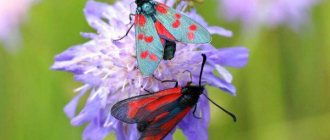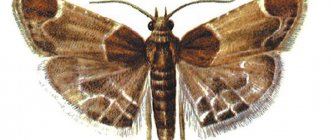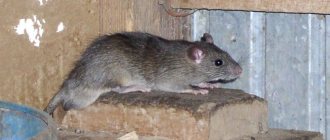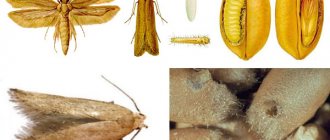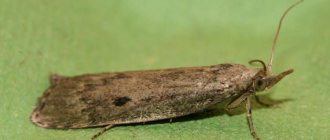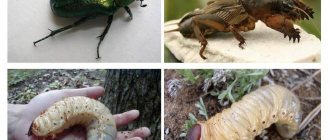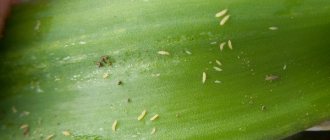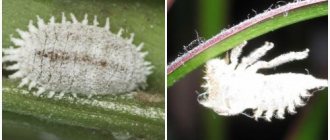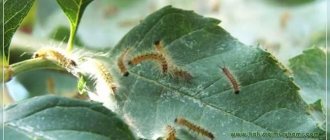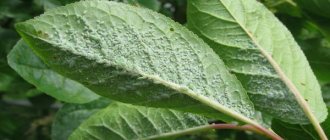Boxwood prefers warm, moist places, which also attract many insects. Therefore, the plant is often affected by both fungal diseases and pests. They can be detected by a number of external signs, for example, yellowing of foliage, the appearance of spots, weakening of shoots. It is important to recognize the main diseases of boxwood: photos and descriptions of symptoms, as well as treatment methods are presented below.
Healthy boxwood, which is regularly prevented from diseases and pests
Description of the insect
The boxwood moth (lat. Cydalima perspectalis Walker) belongs to the large family of grass moths. In total, it includes 10,000 species of insects, some of which are recognized as dangerous phytophages: their caterpillars feed on the leaves of the plant, which often leads to its death. The boxwood moth is a dangerous pest, choosing only boxwood to feed its larvae in Europe. In their homeland, in eastern Asia, insects attack winged and Japanese euonymus, as well as purple holly.
An adult butterfly is a relatively large insect, the wingspan of which reaches 4.5 cm. They are scaly, consisting of several longitudinal segments, fanning out from the body of the boxwood moth. The butterfly looks very pretty: its wings are evenly colored sky blue, and the edges are surrounded not only by a wide brown edging, but also by a fringe of hairs. When the firefly sits, she puts them behind her back in the form of a house.
Large hemispherical eyes are located on the head. They are clearly visible because their black color contrasts with the light body and wings. Nearby are thread-like antennae and labial tentacles, reminiscent of a bird's beak in shape.
Young caterpillars are painted a bright yellow-green color, only their heads are black. The length of a larva that has recently hatched from an egg is up to 2 mm. Its development time is about a month: during this time the caterpillar feeds intensively, gains mass, increases in length and darkens. Longitudinal white (several thin) and black stripes (one, but thick) appear on its sides. The body of the boxwood moth larvae is covered with dark pinpoint growths. Afterwards, it pupates and then turns into an imago - an adult butterfly, ready to take part in procreation.
History of infection
The primary habitat of the boxwood moth is eastern Asia. It is a natural insect for the south of the Russian Primorsky Territory. The spread of the pest across Europe began in 2006, when it was discovered in Germany. From that time on, the boxwood moth began to rapidly spread throughout the Old World: the insect reached Great Britain and Turkey. The speed of damage by the emerging invasive phytophage forced scientists to model a possible plan for the development of events. His results were disappointing: the moth is capable of filling the entire territory of Europe where its food plants grow.
In 2012, the pest was brought to Sochi, delivered from Italy along with spherical boxwood intended for landscaping the city in preparation for the Olympics. Soon, botanists noticed that the boxwood began to dry out and die. It turned out that many young and large trees were affected by the boxwood borer. Soon the insect spread throughout the south of the Krasnodar Territory and penetrated into Adygea and Abkhazia. Scientists are sounding the alarm: the existence of relict forests in Russia today is under great threat.
Lifestyle and reproduction
The insect lays eggs on fresh green leaves on the reverse side. The diameter of the egg is about 1 mm. The larvae that emerge from them pass into the pupal stage after 3-4 weeks. The length of the pupa is 2.5-3 cm. After 10–15 days, the caterpillars turn into butterflies. In Russia, in the conditions of the Krasnodar Territory, the boxwood moth manages to be born in three generations within a year. But under particularly favorable climatic conditions, identical to the conditions of the natural habitat, the 4th generation of the insect also occurs. For wintering, the moth prepares a place for itself in the form of a cocoon, fixed in a thick web between the leaves of the boxwood.
Analysis of litter and soil samples taken in the Yew-Boxwood Grove at various distances from the trunks of damaged Buxus trees revealed neither traces of pupation nor the Cydalima perspectalis pupae themselves on the ground (Fig. 17). Back in 2013, it was established that on the Black Sea coast of the Krasnodar Territory, the species overwintered in the 2nd instar caterpillar stage in a characteristic cocoon between young boxwood leaves. Already in February 2014, similar observations were confirmed in the invasive population of this moth near Krasnodar, which, as it turned out later, successfully overwintered
Life of the boxwood moth
Adults and larvae spend their lives in the vicinity of boxwood, whose leaves they feed on. In rare cases of food shortage, the pest may temporarily be content with the greenery of other plants or boxwood bark. Scientists have established that in Sochi and nearby areas the pest managed to feast on maple, cherry laurel, Colchian larch, medlar and ash.
The pest overwinters directly in the branches of the boxwood, creating a protective cocoon of cobwebs in them.
Boxwood moth caterpillars are extremely voracious: it takes only 4 hours for one individual to completely eat a leaf. A laboratory study was conducted in which a 3-liter jar was tightly filled with boxwood leaves. 20 caterpillars were planted in it, and after 2 hours there was nothing left of the greenery.
Reproduction
After mating with males, females look for a suitable plant and lay 1 mm eggs on young and succulent leaves on the reverse side. This precaution helps protect the masonry from pests, scorching rays of the sun, and rain.
Soon caterpillars emerge from them and begin to actively gnaw boxwood leaves. This will continue for 3–4 weeks until it is time to pupate. The moth stays in the pupal phase for a short time: an average of 10 days, after which an adult butterfly emerges.
On the coast of the North Caucasus, 3 generations of the boxwood moth are born in one year. But under favorable weather conditions - warm late autumn or early spring - 4 generations of the insect appear.
Why is it dangerous?
Butterflies and caterpillars pose a huge threat to boxwood trees. They actively devour the green parts of the plant. The caterpillar can destroy one leaf in just 4 days. During the same period, 20 larvae can eat a 3-liter jar filled with boxwood.
If there is a lack of food, insects switch to other deciduous ornamental plants - larch, holly, euonymus, medlar and others. Cases are described when the moth also affected fruit trees, which is explained by the lack of usual food in the immediate vicinity.
If treatment is not carried out in time, within just one season the moth population can completely consume a small grove of boxwood; the plants subsequently recover poorly and quickly die.
Harm
Boxwood leaves are the favorite food of this species of moth, so it causes enormous damage to this relict and rare plant. Groves on the mountain slopes in the Sochi region, Adygea and Abkhazia, decorative plantings on the streets of populated areas, and boxwood on private plots are also under threat.
Colchian boxwood, growing in Sochi and Adygea, is listed in the Red Book of Russia, as the species is on the verge of extinction. This makes the problem of the moth even more acute.
Due to the fact that the larvae intensively eat leaves, the natural foliage cover of plants is disrupted. This in turn leads to disruption of the movement of nutrients and a reduction in the process of photosynthesis, which negatively affects boxwood. Its shoots begin to dry out and even die completely.
The scale and extent of pest damage depends on many factors:
- availability of food supply;
- interactions within the population and with other species;
- weather conditions;
- application of protective measures against the pest, etc.
The south of the Krasnodar Territory is very favorable for the life and reproduction of the moth, which cannot but alarm scientists. There is a suitable average annual temperature and air humidity, an abundance of boxwood and the absence of enemies.
You can understand that boxwood is being eaten by a moth by the following signs:
- the presence of lumps of cobwebs on the branches and leaves, which contain excrement and skins of caterpillars remaining after their molting;
- on boxwood you can see green caterpillars with black stripes on the sides, pubescent with small hairs;
- the ground around the plant is covered with waste products of the larvae: the remains of greenery processed in the body and feces with an unpleasant odor;
- boxwood leaves (and later shoots and entire bushes) begin to dry out and die.
If these alarm bells are noticed, then you need to take action, knowing how to deal with the boxwood moth before it completely destroys the valuable plant.
Prevention measures
To prevent boxwood diseases and the appearance of pests of this plant, it is necessary to organize proper care of the bush:
- Timely fertilizing and watering.
- Regular removal of damaged shoots.
- Disinfection of tools when working with wood (pruning).
- If grown indoors, it is necessary to maintain a fairly high level of humidity and temperature (above 24-25 degrees in summer, about 12-15 degrees in winter).
- Carry out regular treatment with fungicides and insecticides as described above.
- Plant plants that attract beneficial insects, for example: dill, parsley, plantain, cumin, white mustard (it also improves soil fertility), cilantro, phacelia.
In addition, it is very important to monitor the condition of the bush. To do this, it is useful to know the symptoms of various diseases and the appearance of pests (you can identify them from the photo). You should also know the signs of improper care - for example, excess moisture or too low temperatures.
| External signs | Cause |
| Boxwood leaves have curled and dried out | Insufficient watering and moisture |
| The leaves have lost their rich green color | Excessive lighting |
| Boxwood leaves have turned yellow | Low temperatures |
| The foliage has acquired reddish hues | Boxwood does not receive enough nitrogen fertilizers |
All these signs of boxwood diseases can be easily identified visually and using the photos presented above.
Methods of pest control
Effective measures to combat the boxwood moth used in Sochi are mechanical removal of caterpillars, pheromone traps, and the use of chemical insecticides. Caterpillars and egg clutches are collected by hand and then burned. Deep pruning of plants will also help reduce the pest population. Biological agents are used privately by site owners, but municipal organizations do not use them. It is not possible to treat mountain boxwood groves, so it is very difficult to control the spread of the moth.
How to deal with pests on the site? First of all, you need to regularly and carefully inspect the boxwood, starting in early spring. It is important to remember that butterflies lay eggs on the back of leaves: that is where you need to look for them.
Chemical
There are a number of remedies for the boxwood moth of chemical origin that help destroy the pest by spraying. The insecticide contains toxic substances that, if they enter the body of an insect, lead to the death of the latter.
Such means include:
- Pyrethroid drugs: “Decis” and “Decis pro”, “Karate”, “Fastak”, “Fury”.
- Stronger chemical insecticides: BI-25 and karbofos.
- “Dimilin” is a contact-intestinal chemical that destroys young caterpillars. Its active ingredient is diflubenzuron.
All these products must be used with caution, because they contain substances that cause poisoning in humans. It is important to act exactly according to the instructions.
On the territory of Russia, the fight is complicated by the favorable climate for the pest and the fact that it is impossible to control the population in mountain groves: the terrain and the status of the environmental protection zone interfere. Downstream mountain rivers there are resort settlements, which does not allow the use of insecticides on a global scale.
Biological
Biological agents that allow you to destroy the moth are not very popular, although they are effective against the caterpillars of the pest. The best results are shown by preparations with Thuringiensis bacteria from the genus Bacillus: BIP, BTB, Dendrobacillin, Dipel, Lepidotsid, etc. There is also information that some gardeners use Azadirachta indica oil on their plots as a milk spray, diluting it in water 1/ 25 and using daily.
The moth is a boxwood pest that has become notorious in Russia quite recently. The complexity of combating it on a global scale is complicated by the peculiarities of the region. But, if the boxwood moth is infested on the site, it can be dealt with using chemicals and biological preparations.
Reviews from gardeners
orest
If the plant is affected by fungal diseases, when warm weather arrives, treat with Ditan, Hom. But don't expect an immediate miracle. The plant will slowly recover.
Source: 7dach.ru
Ky!
In case of disease, spray with a powerful fungicide, for example, foundationol or Ridomil Gold.
Source: floralworld.ru
